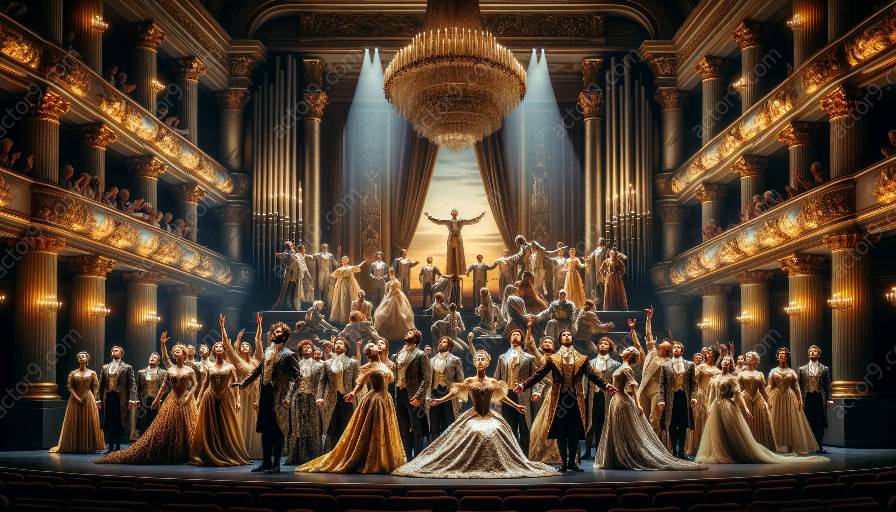Opera, a classical art form, has historically been perceived as exclusive and lacking representation of underrepresented communities. However, as society progresses, it becomes imperative for opera performances to embrace inclusivity and diversity. In this comprehensive guide, we will explore the ways in which opera performances can be more inclusive of underrepresented communities, while delving into the important concepts of representation and diversity in opera.
Understanding Representation and Diversity in Opera
Opera, as an art form, has the power to embody and reflect the diverse tapestry of human experiences and cultures. While there have been notable strides towards diversity and representation in recent years, there is still much progress to be made. Representation encompasses the inclusion and portrayal of individuals and communities from varied backgrounds, including race, ethnicity, gender, sexual orientation, disability, and socio-economic status in opera narratives and performances. Diversity, on the other hand, refers to the presence and involvement of individuals from different backgrounds and perspectives in the creative and production processes of opera.
Steps to Enhance Inclusivity in Opera Performances
1. Diverse Casting: Opera companies can actively seek out and cast performers from underrepresented communities in leading roles, supporting roles, and ensemble roles. This not only provides opportunities for talented individuals but also enriches the storytelling and representation on stage.
2. Progressive Storytelling: Opera narratives should be modernized to reflect the contemporary world and address relevant social issues. This presents opera as a living, evolving art form that resonates with diverse audiences.
3. Community Engagement: Collaborating with local communities to provide access to opera training, education, and exposure can foster inclusivity and diversify audience demographics.
4. Accessibility Initiatives: Implementing accessible facilities, captioning, sign language interpretation, and audio descriptions can make opera performances more inclusive for individuals with disabilities.
Championing Underrepresented Voices in Opera
1. Commissioning New Works: Opera companies can commission and perform works by composers and librettists from underrepresented communities, offering a platform for these voices to be heard and celebrated.
2. Mentorship Programs: Establishing mentorship programs for emerging talent from underrepresented communities can provide guidance and support in navigating the opera industry.
3. Cultural Sensitivity Training: Opera companies should invest in cultural sensitivity training for their staff and creative teams to ensure respectful and authentic representations of diverse cultures and traditions.
Embracing Diversity within Opera Organizations
1. Inclusive Hiring Practices: Opera companies should prioritize diversity in their hiring processes, encompassing administrative staff, orchestra members, creative teams, and leadership positions.
2. Diversity Initiatives: Implementing diversity policies and initiatives within opera organizations promotes an inclusive and supportive environment for artists and staff from underrepresented communities.
3. Intersectional Representation: Acknowledge and embrace intersectionality by recognizing the multifaceted identities of individuals and incorporating this complexity into opera productions and organizational culture.
Fostering Lasting Change in Opera
1. Collaboration and Advocacy: Opera companies, artists, educators, and audiences can collaborate to advocate for and prioritize diversity and representation within the opera world, nurturing a collective commitment to inclusivity.
2. Education and Outreach: Opera educational programs can actively engage with schools and community centers to introduce young people from underrepresented communities to the world of opera, igniting interest and passion for the art form.
3. Continual Evaluation: Regularly assessing and evaluating the progress of diversity and inclusion initiatives within opera organizations ensures ongoing improvement and accountability.
Celebrating Progress and Shared Experiences
As opera embraces inclusivity and diversity, it creates a vibrant tapestry of voices, stories, and experiences. Celebrating and amplifying the achievements and contributions of underrepresented communities within opera is essential in fostering a sense of belonging and empowerment.
By implementing these strategies, opera performances can actively contribute to a more inclusive and representative artistic landscape, enriching the genre and resonating with a wider audience. Together, we can propel opera towards a future that embraces and celebrates the diversity of humanity.































